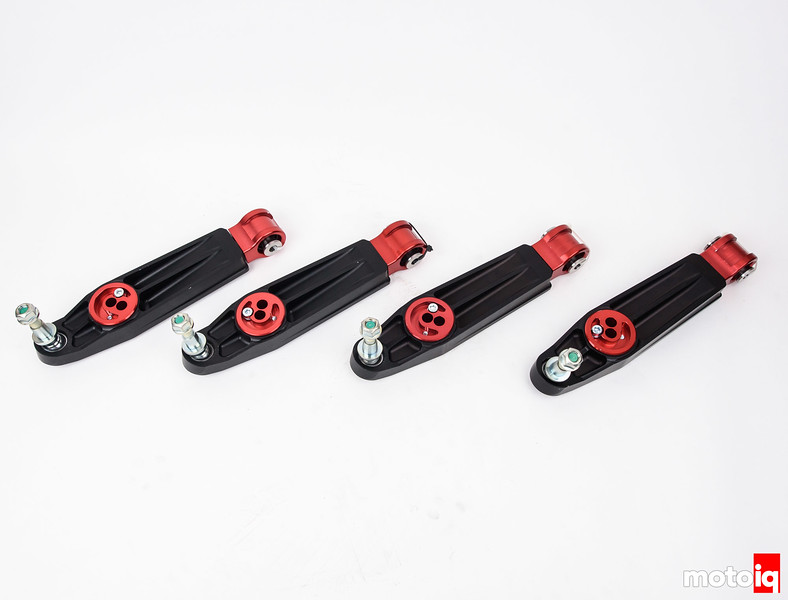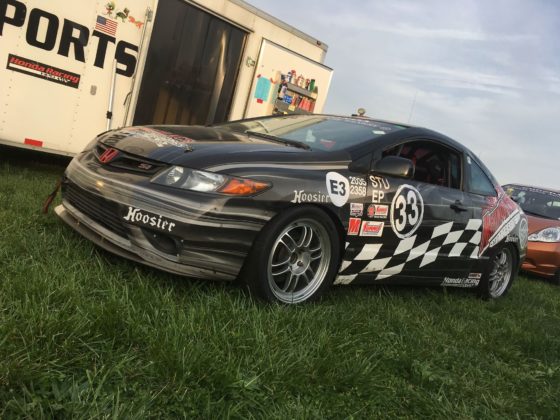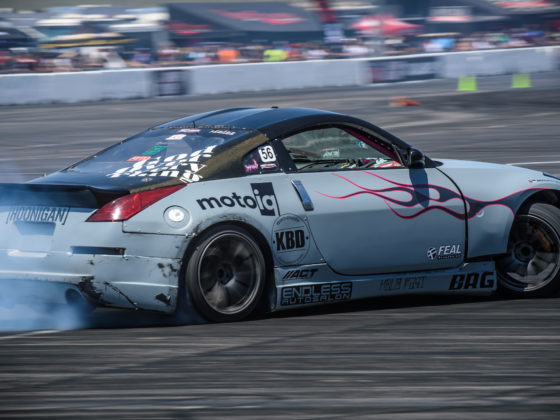
The Porsche Cayman has always had a dear spot in our hearts. In another life, I was an engineer at a large OEM and we were doing benchmarking testing for our next generation of sports car. We benchmarked many different sports cars in the market segment that our upcoming new car was supposed to live in and the one car that stood out among the others as having the best handling was the then new 987 Porsche Cayman. It became the handling target benchmark for the new car and try as they might, the engineers could not get the prototype to match it. We suppose that the fact that the Cayman was a mid-engine car with close to ideal weight distribution might have had something to do with it. The Cayman has a very nimble feel and close to a neutral balance which made the other sports cars feel clumsy. Unfortunately, Porsche outfitted the car with the awful M96 engine which we wrote about its shortcomings which hampered the car. However, in 2010, the Cayman S was available with the excellent direct injection 3.4-liter flat-6 9A1 engine as well as with the fast-shifting, dual-clutch 7-speed PDK transmission. This is one of our favorites variants of the car.
Now as time goes on, these once fairly expensive cars are becoming more affordable on the used car market and they have a fairly large aftermarket of pretty decent parts. Of course, being Porsches, a lot of the performance parts available are sorta douchy boutique parts that are expensive yet give questionable improvements in performance. So instead of looking at what is popular on the forums, we turned to our friends that race these cars in POC, NASA, SCCA and IMSA for advice. We also had a request to build a special Cayman for one of our friends. Her requirement was that she was currently using her 987 Cayman S as a casual track day car but wanted more. She currently also owns a 991 GT3 but did not necessarily want to push the limit and refine her driving on such an expensive car. She decided to turn her 2010 Cayman S into a devoted track day car. One of her requirements was that the car had to be driveable on the street if only to drive to and from the track. She lives in a nice beachside apartment that didn’t have room for a truck and trailer that she would need if her car was a pure race car.
So our orders were simple, build a streetable track car with as few compromises as possible! Our kind of project! We are going to be using parts from Tarett Engineering and KW suspension to put together a suspension setup very close to what a Porsche Cup car uses and what was also used in World Challange and Grand-Am racing on this chassis.

One of the best dual-purpose suspensions with a great deal of flexibility is the KW Clubsport. The Clubsport has independently adjustable compression and rebound damping. The damping adjustability range is wide which means that you have some leeway to change spring rates, handy with a track car. Having double independent adjustment gives a lot of flexibility to tune the car to driver preference and different variables such as tire combinations and different tracks.
The KW Clubsport has features that also lend itself well for street use. The shock body is made of corrosion resistant stainless steel. The spring perches are also made of stainless clad in self-lubricating engineering plastic. No matter how wet or salty the environment you won’t suffer from seized spring seats or damping adjusters. The anti-corrosive construction is one of the reasons why KW Clubsports have a limited lifetime guarantee.

The front struts have spherical bearing equipped mounts. This gets rid of the stock rubber mounts. Since the upper mounts on a McPherson strut suspension car controls a lot of the geometry, namely camber it is important to get rid of the flex so the geometry will stay true under heavy side load. With bearings, there is no flex. The compromise is more interior noise and vibration but hey, this is a track car! The Clubsport upper mounts do have some concessions for street use as the corrosion resistant bearings are completely sealed against moisture and dirt. This is unheard of for race style upper mounts.




16 comments
Ok, I really like the idea of using the HLS to do rake; will be cool if that works well. Do you know what the roll centers end up like on these things when lowered and strut inclination? I was looking at a bunch of more modern McPherson strut cars and trying to figure out what they’re doing for geometry lately.
I am waiting for the right springs to come in so I can figure stuff out and get it all set up. Next article.
Cool, looking forwards to it. I’m in the middle of some some relatively weird design work for an SCCA car so wanted to sanity check some stuff before I start machining a bunch of NLA parts; I’m basically mulling over changing steering axis inclination on 1st gen RX-7 knuckles.
Whole project is going to be going relatively slowly because I have a one month old daughter now, but I figure if I’m going to the extent of having shock pistons made for struts and doing cambered floater hubs on a live axle, might as well be thorough.
You can look to off road and circle track parts for camber floating live axle hubs. Some Mustang guys run that stuff on drift cars too. I am in the middle of figuring out how to control scrub on a strut suspension with really wide tires. My first idea got banned by FD before we could even make it.
I’m cribbing design of it from circle track practice certainly, but scaling down – the circle track stuff with the right features all tends to be 5×5″ bolt pattern and all the affordable good 15×7 wheels (yay SCCA rules) are 4x100mm.
I assume you’ve seen the Revoknuckle, Superstrut, and the dual pivot lower control arm solutions… I’ve been thinking of the same thing and how to get something like that through the rules. Only about 9.5″ of tread width, but on slicks, and I’m not sure power steering is in the weight budget.
What about something like the Chevy Cruze WTCC front strut – they had a big bracket moving the strut around the tire which could let you sink the knuckle deeper into the wheel.
“The anti-corrosive construction is one of the reasons why KW Clubsports have a limited lifetime guarantee.” The KW Clubsports do not carry a warranty as stated by KW’s web site, unlike the other models. Unless you’re referring to another guarantee, thought I’d point that out for those in the market.
Nice program !
I like the pinch bolts instead of jam nuts to lock the alignement settings ! Far more convenient and precise.
The Rennline brace doesn’t look that well engineered though, it’s more for show than actual stiffness.
I’ve had a really good result with tightening the front end with a triangle brace on the front subframe, where there is usually just two stamped steel braces, I have a solid piece that triangulates the whole subframe instead and the difference is quite noticeable ! Should be even more so with full spherical bearings suspensions !
Did you fabricate the brace or is it commercially available?
It’s a Ultra Racing brace. I’m sure you can easily fabricate one like it. But it was very cheap.
It protrudes a bit underneath the car, but no big deal on mine, it never touched anything (and I’m lowered).
Check out their strut brace too, looks much stronger than the rennline 😉
I’ve been running Tarett parts for 15+ years on my aircooled cars, top notch stuff that is built to last. We recently added the Tarett cockpit adjustable sway bars to our 987.1 Cayman racecar and they are awesome too. It’s so nice to be able to make adjustments on the fly without losing time on track or having to roll around on 100+ degree asphalt between sessions.
We agree and that’s why we chose them as well!
Is this project still going on, I’m building up my 2009 Cayman S and looking for ideas.
So far I have JRZ RS’s front and rear, Tarett lower control arms front and camber plates up top. Rennline tie-downs and rear support. Adjustable Rear toe links and I have a Tarett 22mm rear anti-swaybar and adjustable swaybar links.
My car is a PDK and I live in Arizona so I just had a BGB transmission cooler installed. Next, I have Sparco EVO race seats and harness bar going in as soon as I get my BBI mounting brackets, any day now.
It’s an ongoing prosses so I’d like to see how this build is going.
We are about to do a bunch of engine and cooling stuff.
Mike, Two of us own a 987.2 and are about to embark on suspension upgrades. We are both instructors with BMW and PCA and Audi. We have stock suspension, albeit low mileage car. 18″ wheels and 200 R comp type tires. We have experienced understeer, wheel hop and lack of ease to slip angle the car and get on throttle. As we research we are leaning to the Tarett and have watched your video on the suspension work you did on the 987.2. We are wondering if the work you did to lower the tension/thrust arms, etc. (to reduce anti dive and anti squat) actually worked to reduce hop? Stephan and Zafer
Billy Johnson tested the car at Buttonwillow and he did not complain about wheel hop, there is an aero imbalance that we need to fix. that was causing understeer. Billy said the back of the car was very planted. It was turning 1:57 laps which is ok for the type of tires. I think the car has another 2 seconds in it easily with some more suspension and aero tuning. I was not there that day and I could have worked it better working with Billy.